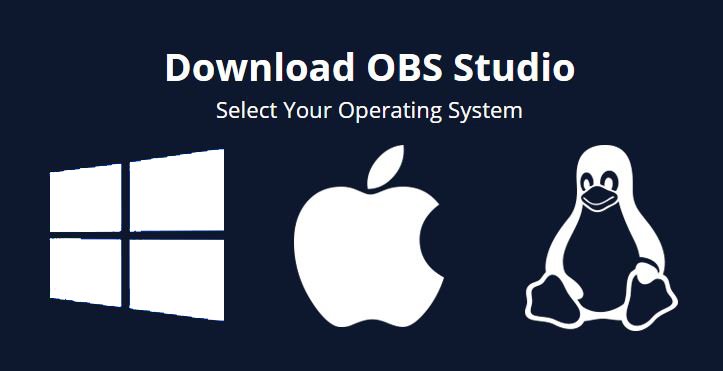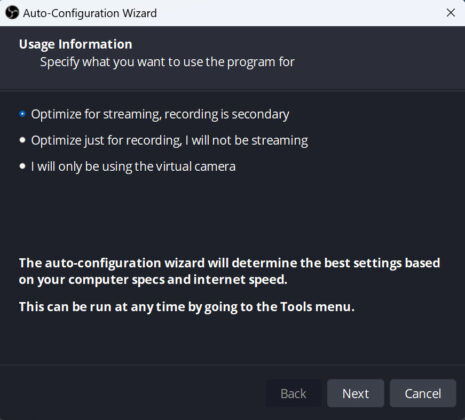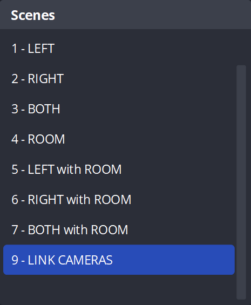Search for answers or browse our knowledge base.
Step 2 – Software Setup
This step will help you configure your computer to connect with the infrared video goggles. Here are quick links to each key step:
1. INSTALL SOFTWARE
Note: If you are installing on MacOS 10.15 (Catalina) or above, please follow the directions on Installing OBS for MacOS and then return to these instructions. Windows users can follow the steps below.
In order to maintain a stable working environment, Vestibular First rigorously tests all versions of OBS prior to approving for use with the Insight Infrared Video Goggles. Please review the below table for supported versions of OBS per platform.
Using versions of OBS not confirmed by Vestibular First is not recommended and can lead to unexpected results.
| Date Released | Windows | MacOS | |
|---|---|---|---|
| 29.0.2 | 2023-02-04 |  |  |
| 28.1.2 | 2022-11-05 |  |  |
| 27.2.4 | 2022-03-29 |  |  |
| 26.1.2 | 2021-01-08 |  |  |
| 25.0.08 | 2020-04-26 |  |  |
| All Previous Versions | 2014 to 2019 |  |  |
A. Download
Browse to the OBS Download page and download the file that matches your operating system (eg. Windows/Apple/Linux)
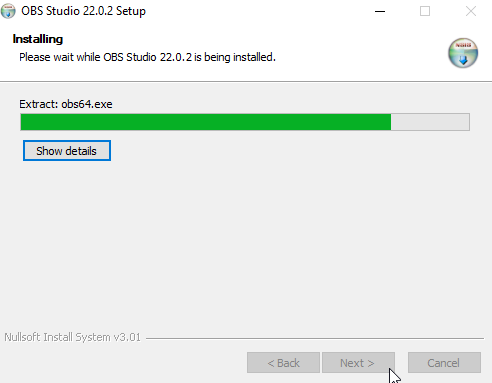
B. Install
Make sure you’re an administrator on your computer (or know someone who is) and then click “next” through all the default settings.
2. INITIAL SOFTWARE SETUP
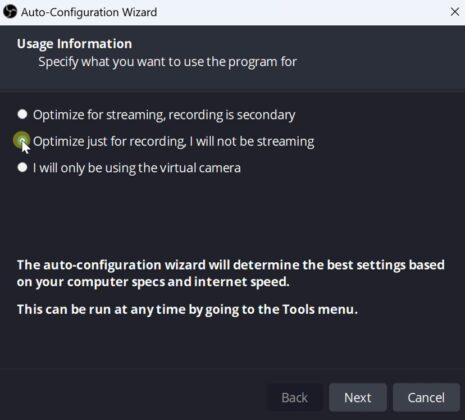
B. Usage Information
In this window, click the option which says “Optimize just for recording, I will not be streaming”.
Click Next.
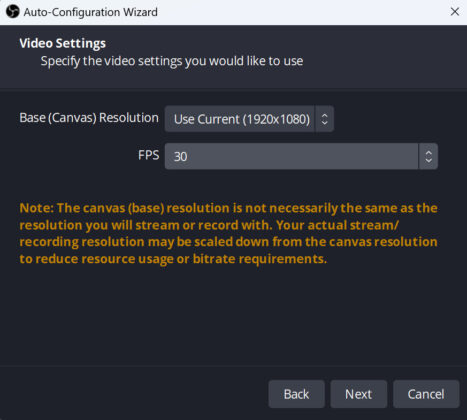
C. Video Settings
Take note of your Base (Canvas) Resolution. In this example it is 1920×1080. You will need this for a later step when downloading templates.
Click on the box next to FPS and select 30.
Click Next.
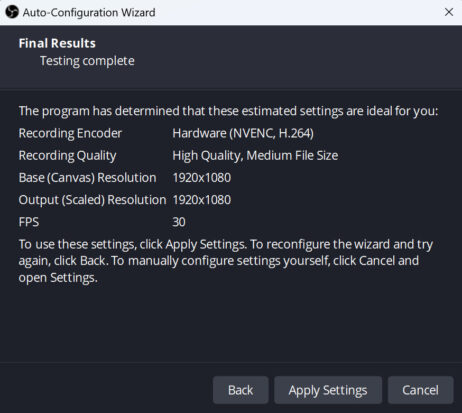
D. Final Results
Click Apply Setting.
You have now completed the initial setup of OBS.
3. DOWNLOAD TEMPLATE
A. Template Generator
Fill in your computer’s screen resolution, for Horizontal and Vertical, and select its Platform.
Note: If you do not remember your computer’s resolution, click here and follow the steps to find it.
Note: If you are unable to download a template from the Template Generator, contact us.

B. Save File
Save this file to your downloads folder or a known location. You will need to know its location for the next step 🙂.
4. IMPORT & ACTIVATE TEMPLATE
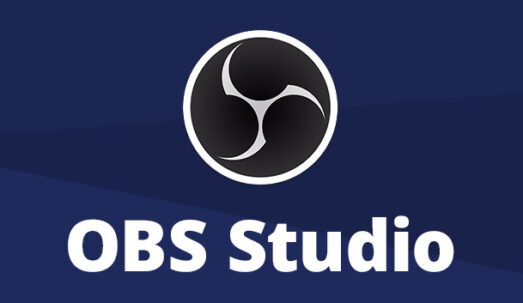
A. Open OBS
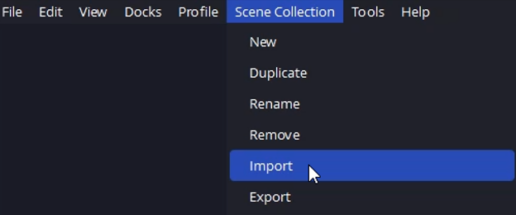
B. Scene Collection
In OBS’s menu bar in the upper left, click on Scene Collection, then click on Import.
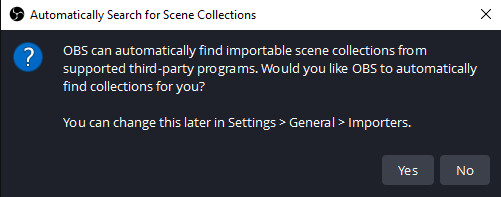
C. Automatically Search for Scene Collections
Note: If the Automatically Search for Scene Collections window does not pop up you can just continue to the next step.
For most, this window will only open the first time you import a template in OBS.
If you see this window, click No.
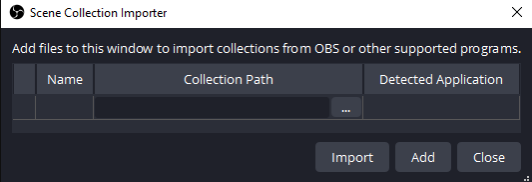
D. Scene Collection Importer
In the Scene Collection Importer window, click on Add.
This will open a window with your local file system.
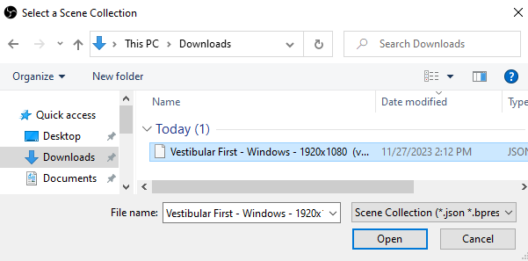
E. Browse for Template
In your local file system, browse for the file you downloaded in the Download Template section.
Once you find the file, click it once to highlight it, then click Open.
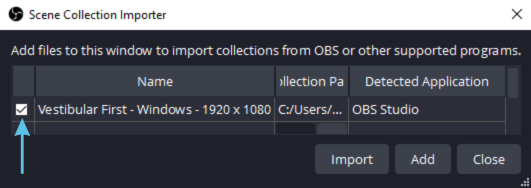
F. Import
You should now see the file in the Scene Collection Importer window.
Make sure the check box on the left side has a check mark.
Click Import.
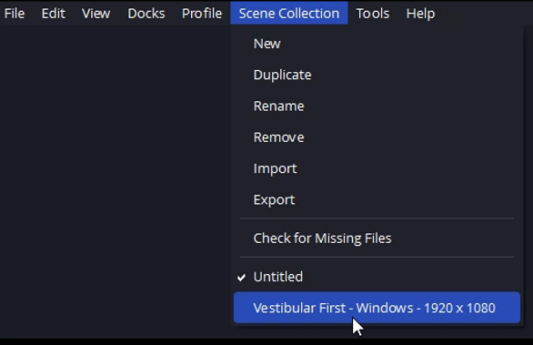
G. Activate Scene Collection
Click on Scene Collection in the top menu bar.
You should now see the imported template at the bottom of the drop down menu, named Vestibular First… followed by your screen resolution. Eg. Vestibular First 1920×1080 as seen in our example.
Click on the imported template name.
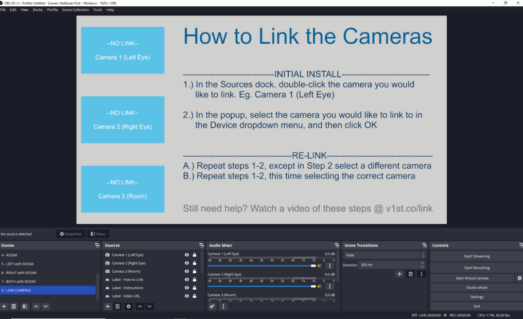
H. You Have Completed Importing and Activating Your Template
Your new imported template will be on scene 9 – LINK CAMERAS automatically.
5. LINK CAMERAS
In order to connect the software to your goggles and additional webcams, a link must be created between them. Most of the work is done for you in the template, but this is a “last mile” connection that is custom to your computer.
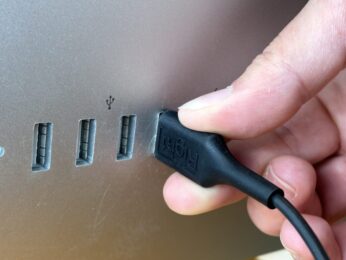
A. Connect All Cameras
In order make sure OBS can see all of the connected devices, plug in the goggles and optionally an external webcam if you are using a camera not built-in to your computer.
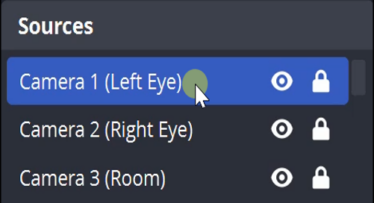
C. Open Properties of Left Eye Camera
In the Sources box, double left-click on Camera 1 (Left Eye) to open the properties window.
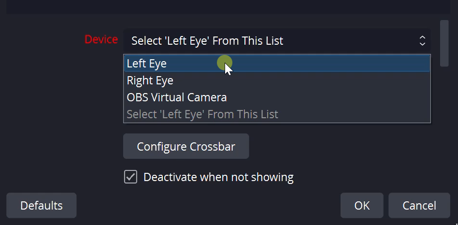
D. Select Left Eye
In the Device dropdown menu, click Left Eye from the list. You should see the camera feed in the preview window.
Click Ok to save the settings.
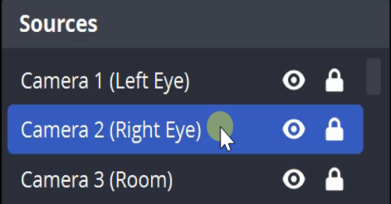
E. Open Properties of Right Eye Camera
In the Sources panel, double left-click on Camera 2 (Right Eye) to open the properties window.
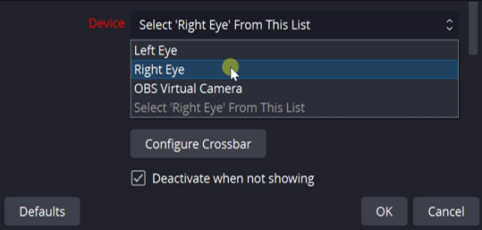
F. Select Right Eye
In the Device dropdown menu, click Right Eye from the list. You should see the camera feed in the preview window.
Click Ok to save the settings.
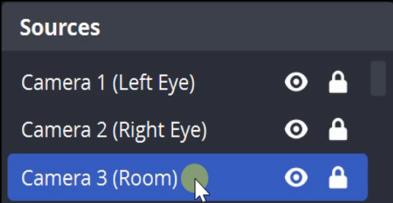
G. Open Properties of Room Camera (Optional)
In the Sources panel, double left-click on Camera 3 (Room) to open the properties window.
Note: The room camera is normally used so the clinician can correlate the recorded eye movements with assessment positioning.
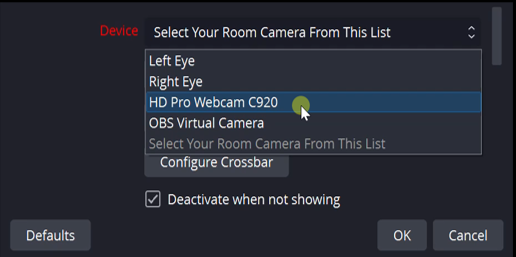
H. Select Room Camera
In the Device dropdown menu, select your room camera from the list. It is usually called either Integrated Webcam or Facetime Camera.
Note: The camera name can vary and also can include the name of the manufacturer (eg. HP Webcam). Try them all until you find the right one–you won’t break anything 🙂
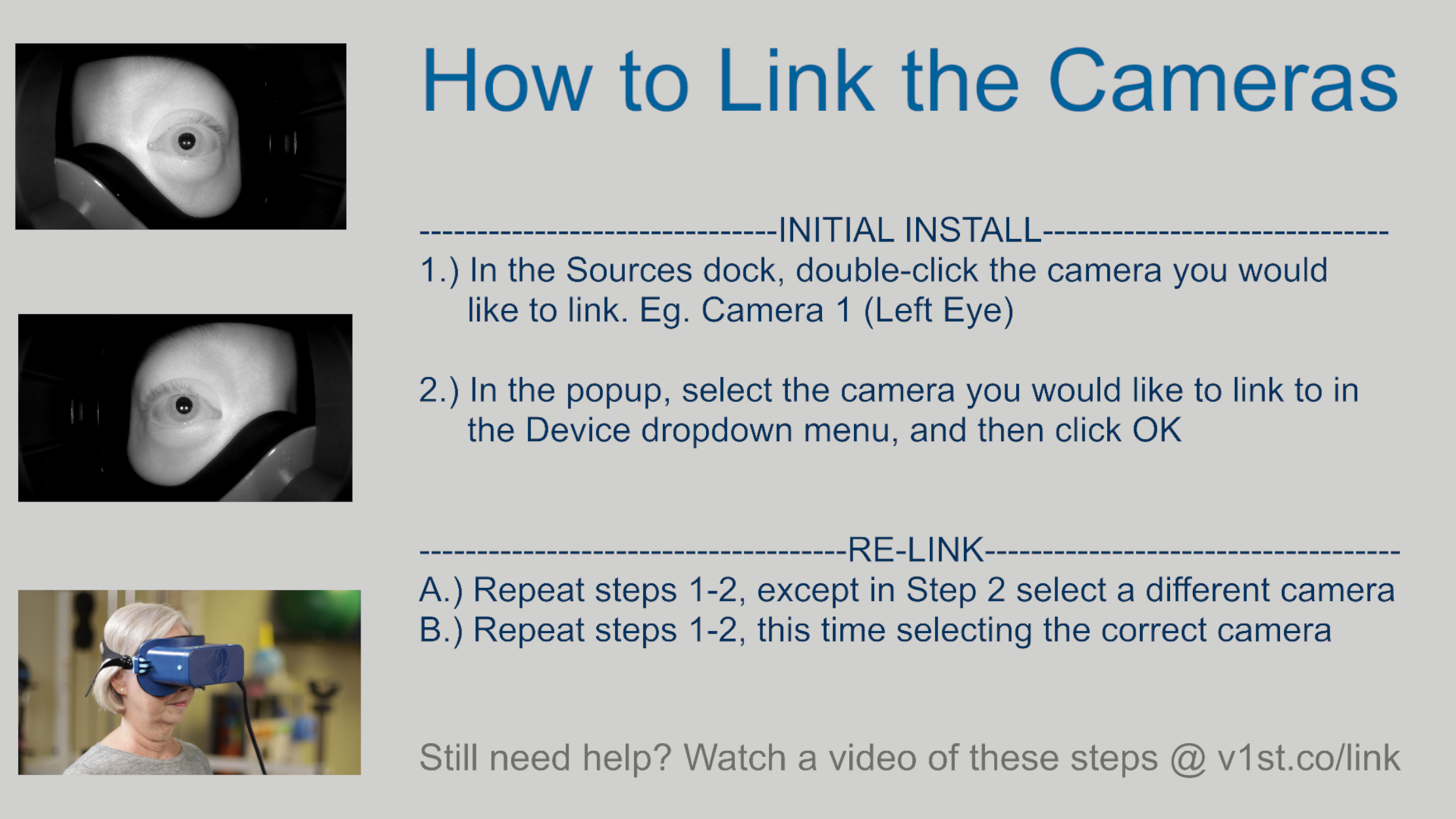
I. Confirm All Cameras are linked
Congrats! Your cameras should now be all linked to OBS and will be visible in this setup scene. You can confirm that the scenes work by clicking through any of the scenes 1 through 7.
6. SETUP RECORDING OPTIONS
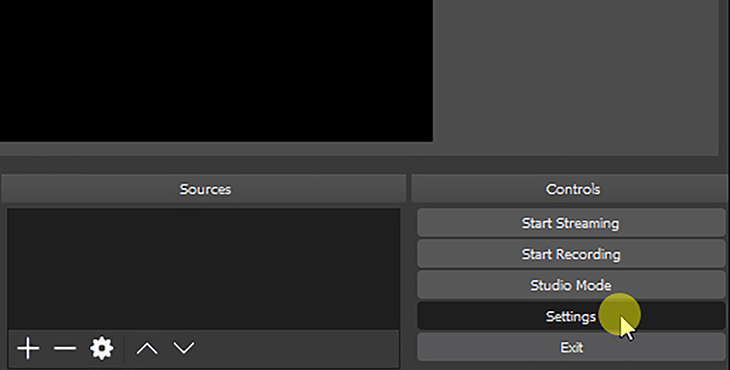
A. View Settings
Click the Settings button in the lower-right corner to view the viewing and recording preferences.
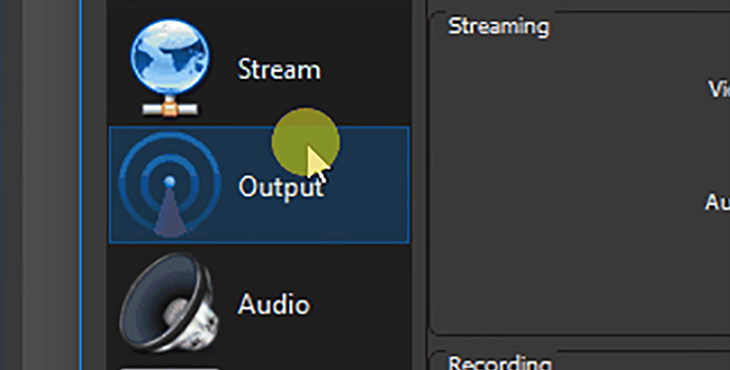
B. Output Options
Click the menu on the left labeled Output to view the settings specific to the recording type and location.
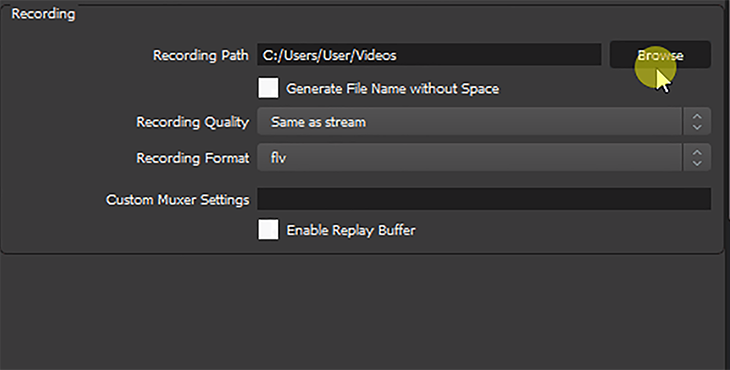
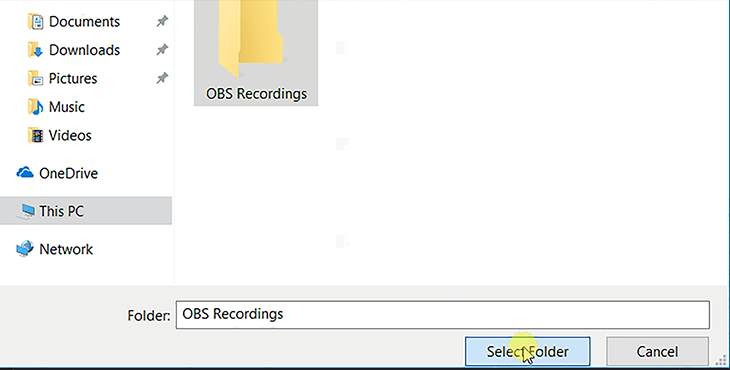
C. Saved Recordings Location
If you wish to change the location of where the stored recordings are kept, click the Browse button and then click Select Folder when you have decided on the new location. This is optional to change and can be adjusted at any point in the future.
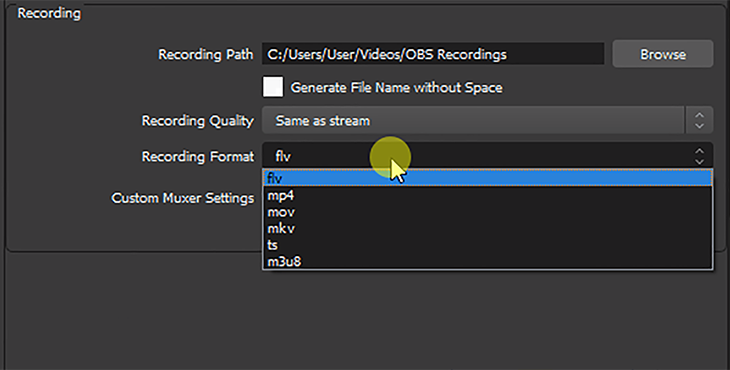
D. Recording Format
OBS allows an extensive list of output formats like MP4, MOV, etc. and can be changed at any point. We suggest the following formats based on your Operating System to maximize compatibility:
- Windows: MPEG-4 (.mp4)
- Apple: Quicktime (.MOV)
Click the Recording Format dropdown and then click the format you require, followed by OK.

